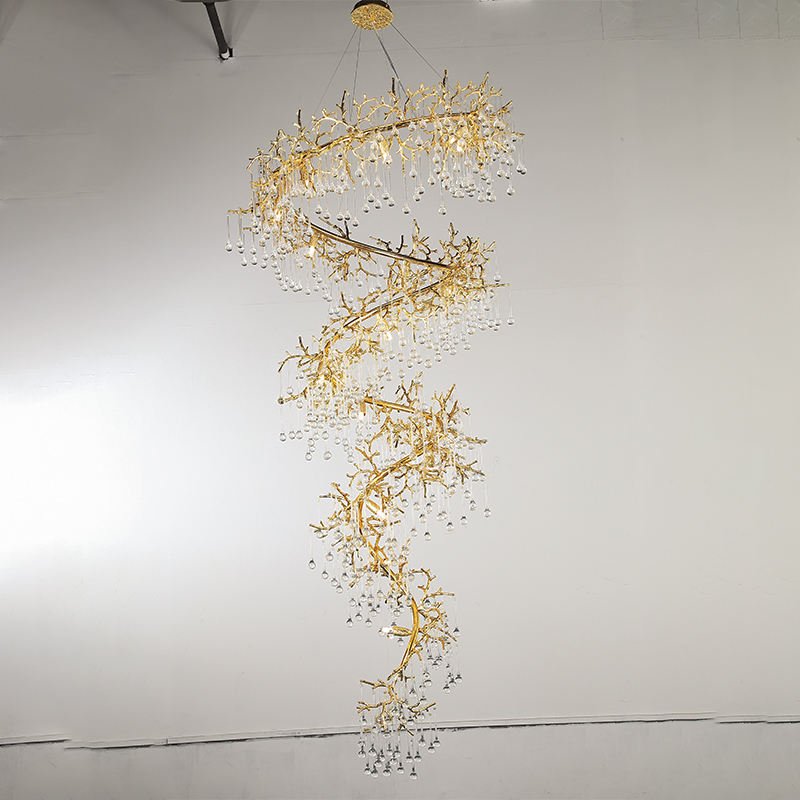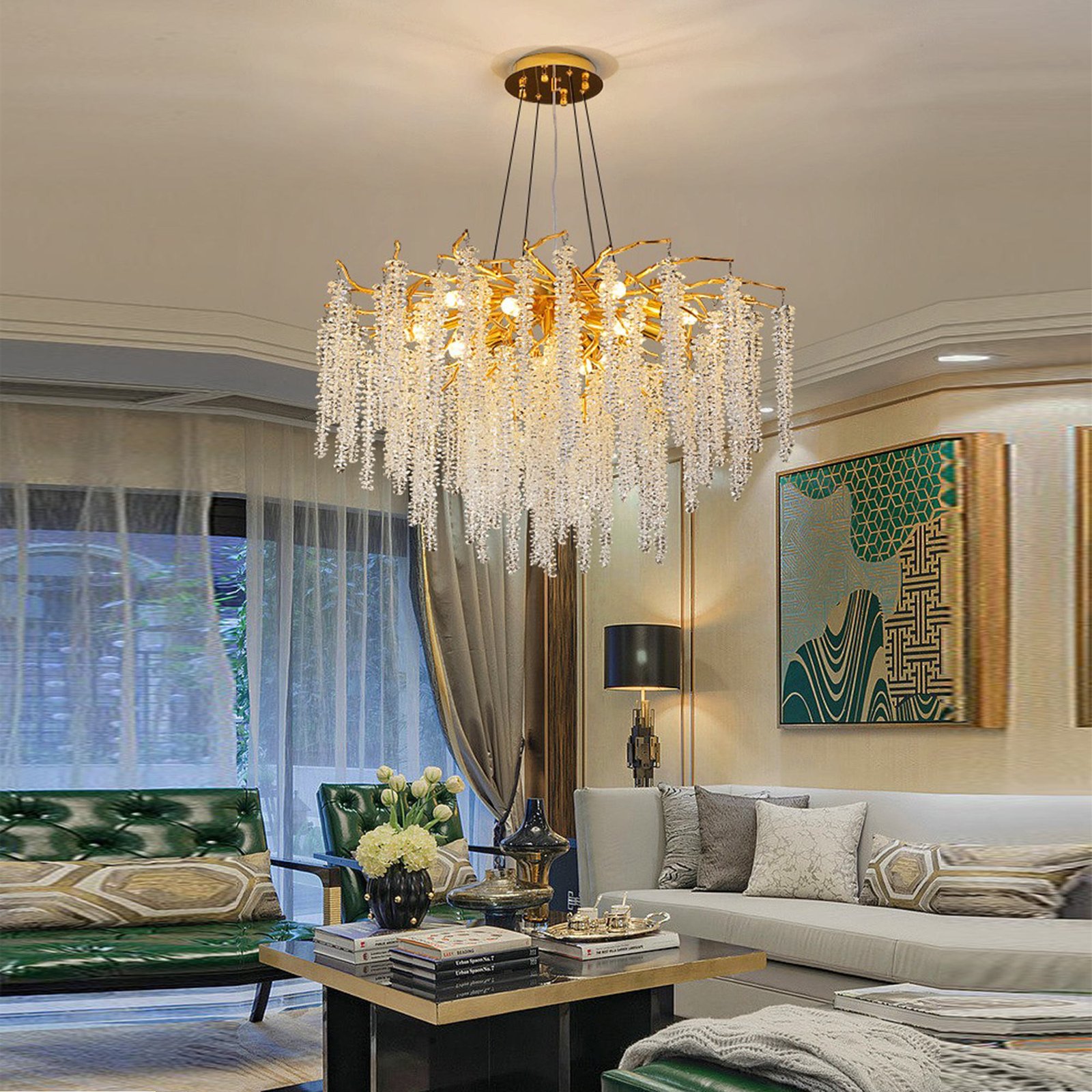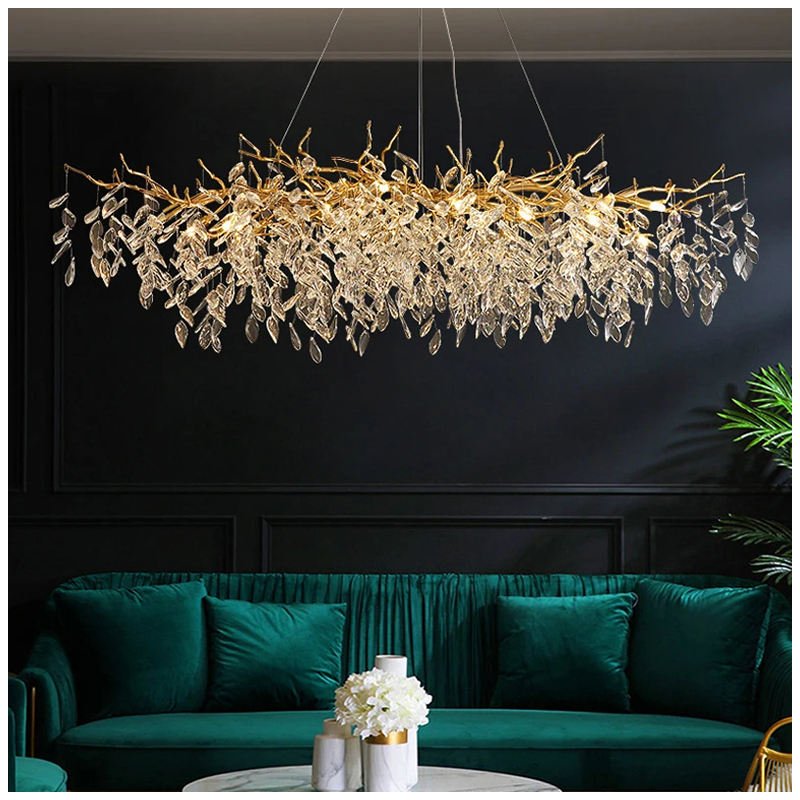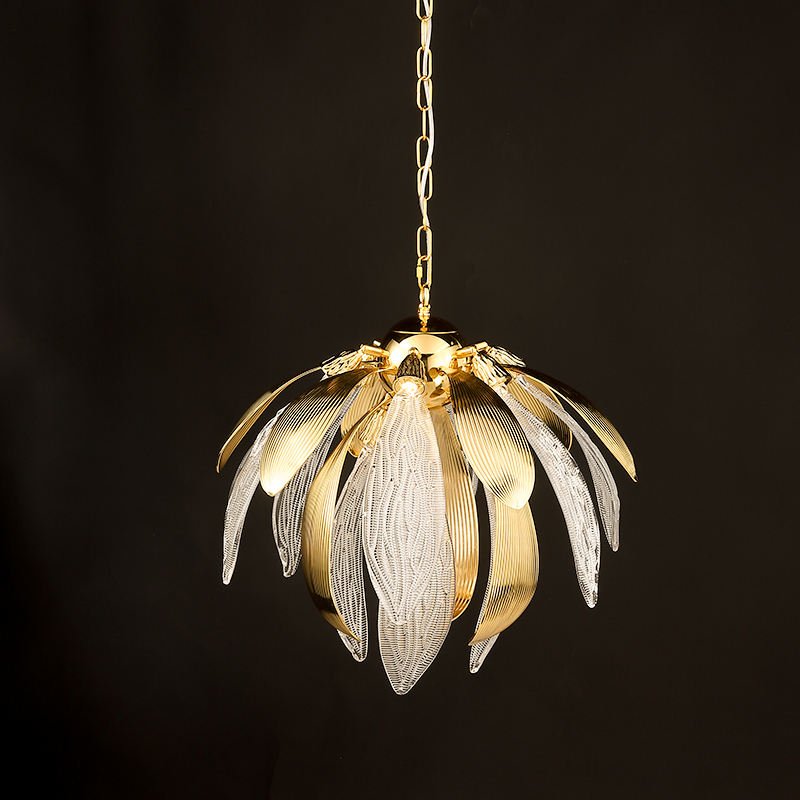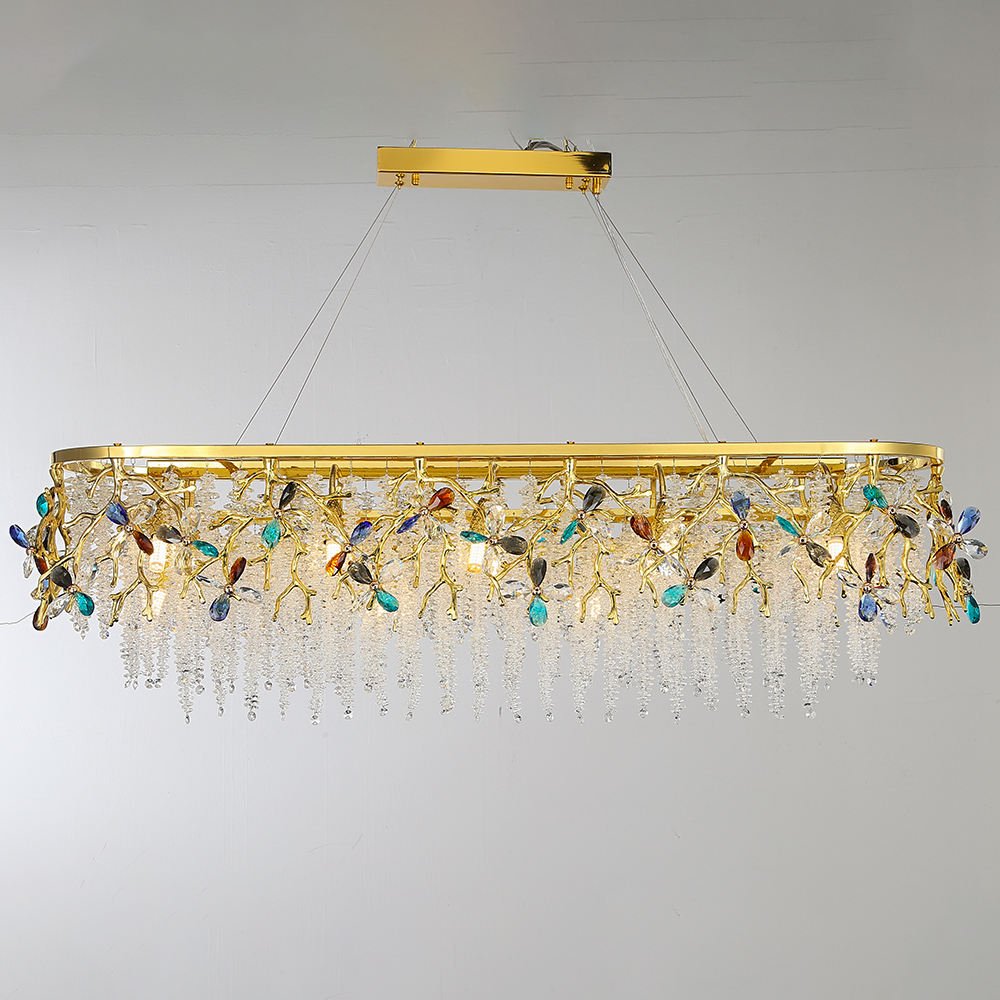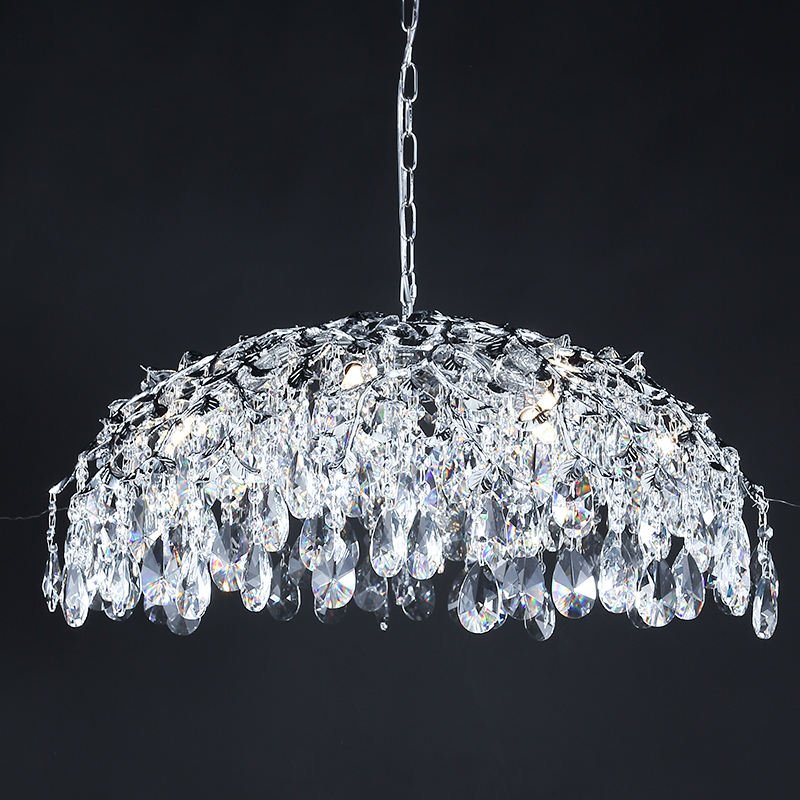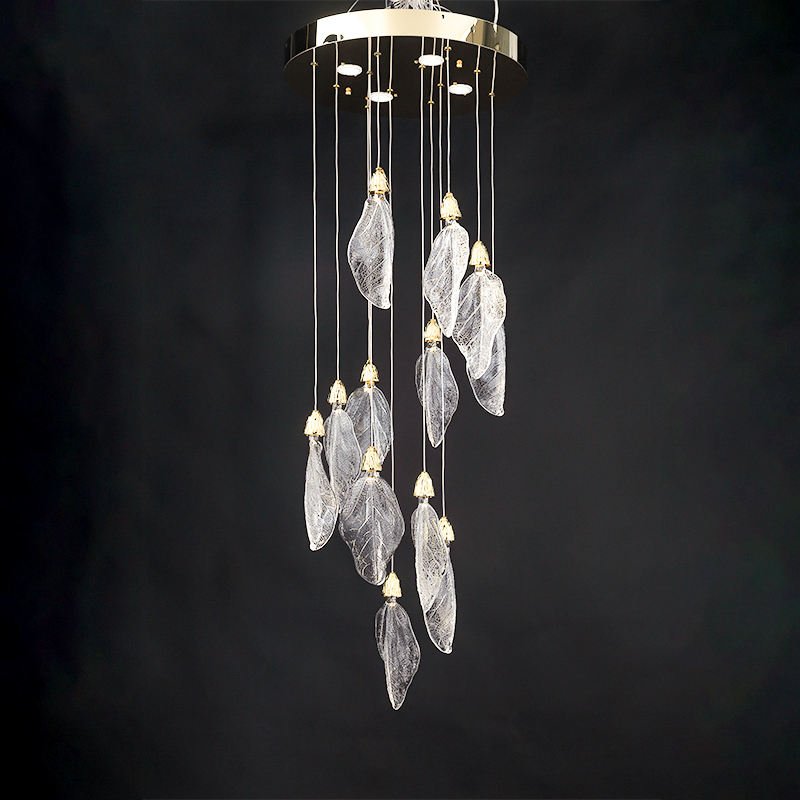Key Takeaways:
- Tree branch chandeliers bring a unique, natural element into home decor.
- They come in various styles, from truly rustic using real branches to modern interpretations with metal and crystals.
- DIY options are popular, letting you create a personalized fixture.
- These chandeliers work well combined with other wood or natural accents.
- Consider room size and ceiling height when selecting a branch chandelier.
- They can be statement pieces in dining rooms, living rooms, or entryways.
Exploring Different Styles of Branch Chandeliers
So, you’re thinkin’ about a branch chandelier? Good choice. They’re not all the same, though, not by a long shot. Theres a whole world of styles of branch chandeliers out there, each bringin’ its own kinda vibe to a room. Some folks lean towards the really natural look – actual branches, maybe lightly finished or painted, wired up with simple bulbs. This style fits perfect in a cabin, a farmhouse kitchen, or anywhere you want that raw, outdoorsy feel. It’s honest, ya know? Doesn’t pretend to be somethin’ it ain’t. You can almost smell the woods lookin’ at some of ’em. It’s about texture and the unpredictable shapes nature makes. No two are ever exactly alike, which is part of the appeal, I reckon. Keeping the bark on adds another layer of texture, but smooth, sanded branches have their own clean kinda beauty. You gotta think about the kinda bulbs too – Edison bulbs look real nice with the rustic ones, gives off a warm, vintage glow.
Then you got the more refined takes. Maybe metal branches, finished in gold, bronze, silver, or even black. These can look super elegant, almost sculptural. I’ve seen some amazing pieces that mix metal branches with crystals or glass elements, kinda like ice or dew drops hangin’ off a branch in the morning. Take this Luxe Gold Spiral Branch Chandelier with Crystal Droplets, for example. It’s got that organic branch shape, but the gold finish and the sparkly bits make it pure glam. It’s a far cry from a rough piece of wood, but you still see the inspiration clear as day. These types work great in more modern or transitional spaces, where you want that touch of nature but maybe dialed up in sophistication. They catch the light beautifully, both when they’re on and off. The way the light plays off the metal and through the crystals adds a dynamic quality you don’t get with simpler fixtures.
Don’t forget the classic branch chandelier styles either. These often find a middle ground. Maybe it’s a more traditional chandelier form, but the arms are shaped like branches, often in a dark bronze or wrought iron finish. They fit well in traditional homes but add a bit more personality than your standard candle-style chandelier. Sometimes they incorporate little leaf details or subtle textures that hint at nature without goin’ full rustic. Think about scale too. You can get delicate, small branch fixtures for a hallway or powder room, or massive, sprawling ones that dominate a two-story foyer. The key is matching the chandelier’s presence to the room’s size and your overall decor goal. I always tell people, measure your space, consider ceiling height, and really visualize how that specific shape and style will interact with everything else. A big, chunky rustic branch might overwhelm a small, delicate room, while a thin, metallic one could get lost in a vast, high-ceilinged space. It’s all ’bout balance.
The Charm of Rustic Branch Chandeliers
Ah, rustic. When people say “branch chandelier,” this is often what pops into their head first. And for good reason! There’s a real, undeniable charm to bringing actual pieces of the outdoors inside, especially when it comes to lighting. Rustic branch chandelier designs are all about celebrating the imperfections and raw beauty of nature. Think gnarled wood, interesting bark textures, the way a branch twists and turns. Its that authenticity that draws people in. You’re not just getting a light fixture; you’re getting a piece of natural sculpture that also happens to light up your room. It feels grounded, earthy. I remember installing one made from a piece of driftwood in a coastal home – the salt-worn texture and pale color were just perfect for the space. It immediately set a relaxed, beachy tone.
The beauty of these often lies in the natural materials used in rustic designs. We’re talking real wood – oak, birch, maple, driftwood, you name it. Sometimes the wood is left completely natural, maybe just cleaned and sealed to protect it. Other times, it might get a light stain to enhance the grain or match other wood tones in the room. Or maybe a whitewash for a more shabby-chic or coastal vibe. The finish makes a big difference. A dark, rough-hewn branch feels very different from a smooth, pale birch branch. Beyond the wood itself, the other components are usually kept simple: basic sockets, maybe some rope or chain for hanging, exposed filament bulbs. Its meant to feel unfussy, approachable.
One of the great things about the rustic style is its connection to DIY. Loads of folks get inspired to make their own. Find a cool branch, figure out the wiring (safely, please!), add some bulbs, and boom – custom chandelier. We’ll get more into the specifics of DIY later, but the idea that you could make it yourself adds to the rustic charm. It feels less manufactured, more personal. Even the ones you buy often have a handcrafted feel. These fixtures are perfect for spaces aiming for warmth and comfort: think log cabins, country homes, farmhouses, or even just a cozy den in a suburban house. They pair really well with other natural textures like stone fireplaces, leather furniture, wool throws, and jute rugs. It’s about creating a cohesive, nature-inspired environment. But don’t think they only work in purely rustic settings. Sometimes, adding a rustic branch chandelier to a more modern or industrial space can create a really interesting contrast, warming things up and adding an unexpected organic touch. It stops the room feelin’ too cold or sterile. Finding that balance is key, make sure it complements, rather than clashes, with your existing stuff.
DIY Branch Chandeliers: Crafting Your Own Natural Light Fixture
Alright, let’s talk DIY. Making your own branch chandelier is a super popular project, and I get why. You get a totally unique piece, exactly the size and style you want, plus bragging rights! If you’re considering it, the first stop should probably be a good DIY step-by-step guide. Seriously, don’t just wing the electrical part. Safety first, always. Find a sturdy, interesting branch – make sure it’s properly dried out (kiln-dried is best if you can find it, otherwise let it season for ages) to prevent cracking or warping later. You’ll need to clean it, sand it (or not, depending on the look you want), and maybe seal it. Then comes planning where your lights will go. Drill holes for the wiring, run the wires (use proper lighting wire and components), connect the sockets, and figure out how you’ll hang the whole thing securely. It sounds straightforward, but take your time.
Now, while it’s rewarding, there are definately common mistakes to avoid with DIY branch chandeliers. The biggest one? Electrical safety. Using the wrong gauge wire, making bad connections, not grounding properly – these can be fire hazards. If you’re not 100% confident, get an electrician to check your work or even do the wiring part for you. Another issue is picking a branch that’s too heavy or not structurally sound. Remember, this thing is hanging over your head! Make sure your chosen branch and your hanging hardware can take the weight, plus the weight of the bulbs and wiring. Also, consider the wood itself. Green wood will shrink and potentially crack as it dries. Wood that isn’t treated might attract bugs. And think about balance – an unevenly weighted chandelier will hang crooked and just look kinda… sad. Planning the light placement carefully helps distribute the weight.
But the fun part is the creativity! You can find tons of inspiration online, like these 30 creative DIY ideas. Maybe wrap the branch in fairy lights instead of wiring sockets? Or paint the branch a bold color? Add crystals or beads? Use branches from a specific tree that has meaning for you? DIY also opens up possibilities for creative upcycling ideas. Maybe you combine an old lampshade frame with branches, or repurpose parts from an old fixture. It’s your chance to make something truly personal. Just remember the practical stuff: How easy will it be to change the bulbs? Is it hanging low enough to provide useful light, but high enough not to bonk your head? Think it through before you start drilling! A well-executed DIY branch chandelier is a fantastic conversation piece and adds bags of character to your home.
Combining Branch Chandeliers with Other Natural Elements
A branch chandelier often looks its best when it feels like part of a bigger picture, ya know? It’s naturally inclined to hang out with other earthy bits. Think about combining branch chandeliers with wood accents. This is kinda the most obvious pairing. If you got a rustic wood branch chandelier hanging over a solid wood dining table, maybe with some exposed wooden beams overhead – that’s a match made in heaven, right there. The textures and tones play off each other beautifully. But it doesn’t have to be just big wood pieces. Think smaller wood accents too: wooden picture frames, maybe a carved wooden bowl on a sideboard, woven wood placemats. It’s about repeating that natural material in different forms around the room, creates a sense of harmony.
Even if your chandelier is one of the more modern metal branch types, like say, a gold one, pairing it with natural wood still works wonders. The contrast between the sleek metal and the warm, textured wood can be really dynamic. Imagine a Luxe Gold Lotus Blossom Chandelier above a rustic reclaimed wood console table. The chandelier brings the elegance, the table brings the earthiness, and together they make the space more interesting than either piece could alone. Its about finding connections. Maybe the gold finish on the chandelier picks up the warm tones in the wood grain. Or perhaps the organic shape of the chandelier echoes the live edge of the table. Look for those little threads that tie things together.
Beyond wood, think other natural textures. Stone is a great partner for branch chandeliers, especially the rustic ones. A stone fireplace wall with a branch chandelier hanging nearby? Classic combo. The roughness of the stone and the wood just complement each other. Plants are another no-brainer. Having houseplants in the room reinforces that connection to nature the chandelier brings. Think big leafy greens, maybe some trailing ivy on a shelf. Natural fibers in textiles work great too – linen curtains, jute or sisal rugs, chunky knit wool throws, cotton upholstery. These materials add softness and texture, balancing the hardness of the wood or metal in the chandelier. Even things like pottery, maybe some unglazed ceramic vases, can contribute to that natural, tactile feel. The goal is to create a space that feels layered and cohesive, where the branch chandelier feels like it truly belongs because its surrounded by its natural buddies. Like this Elegant Gold Lotus Flower Pendant Light, it might be metallic, but paired with natural fibers and plants, it just sings.
Modern Twists on Branch Chandeliers
Now, don’t go thinkin’ branch chandeliers are only for cabins or farmhouses. Oh no. Theres a whole heap of modern takes on this idea, and they are seriously cool. Designers are taking the basic concept – the organic, branching form – and translating it into sleek, contemporary fixtures. Often, this means using metal instead of real wood. Polished chrome, brushed nickel, matte black, antique brass, and especially gold finishes are really popular. These metal branches might be smooth and stylized, or sometimes they retain a bit of texture to hint at bark. The result is something that feels connected to nature but also totally at home in a modern or even minimalist interior. It’s a way to add an organic shape to a room that might otherwise be dominated by straight lines and sharp angles. Check out the external article on the growing trend of natural elegance in modern interiors for more on this.
Modern versions often play with materials beyond just metal branches. Glass and crystal are frequently incorporated. Sometimes its tiny crystal droplets, like on that Luxe Gold Linear Branch Chandelier with Colorful Crystals, adding sparkle and reflecting light. Other times, glass might be used more structurally, perhaps as shades shaped like leaves or flowers buds attached to the branches. This adds another layer of artistry and plays with transparency and light diffusion. LED technology has also opened up new design possibilities. Instead of traditional bulbs, LEDs can be integrated directly into the branches themselves, creating lines of light or subtle points of illumination. This allows for really streamlined and minimalist designs where the form of the branch is the light source. Think about the lighting effects in modern interiors; these modern branch chandeliers can create amazing patterns of light and shadow, adding drama and ambiance.
Take a look at something like the Luxe Crystal Umbrella Branch Chandelier with LED Lights. It’s clearly inspired by branches, but the execution is pure modern luxury with the crystals and integrated LEDs. This kind of fixture makes a serious statement in an entryway, a dining room, or even a swanky master bathroom. It shows how far the branch concept can be pushed. These modern interpretations often focus on silhouette and form. They might be sprawling and dramatic, or quite delicate and linear. The choice depends on the impact you want to make and the scale of your space. What’s great is that they still bring that touch of the organic, preventing a very modern room from feeling too cold or clinical. It’s nature, but make it fashion, yeah? It bridges the gap between the natural world and contemporary design sensibilities really effectively.
Best Places to Use Branch Chandeliers
Okay, so you’re sold on the idea, but where exactly does a branch chandelier belong in your house? Truth is, they’re pretty versatile, but some spots just let ’em shine brighter, you know? Thinking about the best uses for various types of branch chandeliers is key. The dining room is probably the most classic placement. Hanging over the dining table, a branch chandelier becomes an instant focal point. It sets the mood for meals, whether it’s a rustic fixture creating a cozy, family dinner vibe or a more elegant metal-and-crystal number adding glamour to dinner parties. Make sure you hang it at the right height – typically 30-36 inches above the tabletop – so it illuminates the table without blocking views across it or glaring in people’s eyes. The scale here is important too; the chandelier should feel balanced with the size of your table and the room. A tiny chandelier over a massive table looks lost, and vice versa.
Living rooms are another prime location. Here, the chandelier often serves more as ambient or statement lighting rather than task lighting like over a dining table. A larger, more dramatic branch chandelier can look amazing in a living room with high ceilings, drawing the eye upward and adding architectural interest. Something like this Ethereal Glass Leaf Cascade Pendant Light, while maybe more ‘pendant’ than ‘chandelier’, has that natural cascade vibe that works brilliantly in a living space, creating a sense of calm. In a living room, you might position it more centrally, or perhaps over a specific seating area to define that zone. If you have lower ceilings, look for wider, more sprawling designs rather than ones that hang down too low. You need clearance for walking underneath!
Entryways and foyers are fantastic spots for making a first impression with a branch chandelier. Talk about a statement piece! A grand, eye-catching chandelier like this Gilded Floral Crystal Dome Chandelier in the entryway sets a luxurious and nature-inspired tone for the whole house right from the start. Again, scale is crucial. A two-story foyer can handle a much larger and more dramatic fixture than a standard entryway. You want something that feels welcoming and impressive, but not overwhelming or out of proportion. Even bedrooms can work, especially master bedrooms aiming for a romantic or serene atmosphere. A smaller, more delicate branch chandelier, perhaps with dimmable lights, can add a beautiful, soft glow. Just ensure it’s positioned thoughtfully, maybe centered in the room or over a seating area if you have one, rather than directly over the bed where it might feel imposing. Avoid places like kitchens where grease and grime might be harder to clean off intricate branch designs, unless it’s a very specific style and placement.
Feature Spotlight: Minas Dimmable Rustic Tree Branch Chandelier
Sometimes lookin’ at a specific example helps make things clearer. Let’s take the Minas Dimmable Rustic Tree Branch Chandelier mentioned in the external links. This piece really leans into that rustic aesthetic we talked about earlier. From the pictures and description, you can see it uses forms that strongly mimic natural branches, likely finished in a way that emphasizes texture and an earthy feel. It’s not trying to be slick or overly modern; its charm lies in its organic shape and rustic vibe. This kinda chandelier is perfect for someone wanting to bring a strong touch of nature indoors, aiming for that cozy, slightly rugged look. Think mountain retreat, modern farmhouse, or even just adding warmth to a more contemporary space that needs an organic counterpoint.
The “dimmable” feature mentioned for the Minas is a big plus, somethin’ I always recommend if possible. Being able to adjust the light level is crucial for creating the right ambiance. You want bright light for some activities, maybe cleaning or a lively gathering, but a much softer, warmer glow for relaxing evenings or intimate dinners. A dimmer switch gives you that flexibility. With a chandelier that often serves as a major light source, like one over a dining table or central in a living room, dimmability transforms it from just a fixture into a mood-setting tool. For a rustic piece like the Minas, dimming the lights low can really enhance that cozy, campfire-like feeling, especially if you use warm-toned Edison bulbs. It makes the light feel more natural, less harsh.
When considering a fixture like the Minas, think about the details. How many bulbs does it take? What type? This affects the total light output and the overall look. Are the ‘branches’ very dense or more spread out? A denser fixture might cast more intricate shadows, while a more open one provides broader illumination. What’s the finish like? Is it actual wood, or metal finished to look like wood? Each has its pros and cons regarding durability and maintenance. The scale is obviously important too – check the dimensions (width, height, hanging length) to ensure it fits your space properly. A piece like this, being quite visually distinct, needs room to breathe. Placing it too close to other large features might make the space feel cluttered. It’s designed to be noticed, so give it the spotlight it deserves in your room design. It’s a good example of how a specific product embodies the general style category, in this case, rustic branch chandeliers.
Branch Chandeliers as Statement Pieces
Let’s be honest, nobody installs a branch chandelier hoping it’ll just blend into the background. These things are born attention-seekers! Whether it’s a gnarly piece of real wood or a glittering metallic interpretation, a branch chandelier is almost always intended as a statement piece. It’s often the first thing people notice when they walk into a room. Why? Because it’s unexpected. It breaks away from the standard, symmetrical chandelier shapes we’re used to seeing. Its organic, sometimes wild form immediately draws the eye and sparks curiosity. It says something about the homeowner’s style – maybe they love nature, appreciate unique design, or aren’t afraid to be a bit bold. For more insights on their appeal, check out this blog post about tree branch chandeliers.
Think about the impact in different rooms. In a dining room, it hangs center stage over the table, presiding over meals and conversations. It sets the entire tone – rustic charm, modern elegance, whimsical nature. In an entryway, as we mentioned, it’s the dramatic welcome, the first taste of the home’s personality. Even in a living room, perhaps competing with a fireplace or a great view, a well-chosen branch chandelier holds its own, adding a sculptural element that functions day and night. This Luxe Crystal Umbrella Branch Chandelier is undeniably a showstopper. It doesn’t just light the room; it decorates it in a major way. Its function goes way beyond simple illumination; it’s a key part of the decor scheme itself.
Because they make such strong statements, choosing the right one is important. It needs to work with the scale and style of your room, as we’ve discussed. But it also needs to reflect you. Don’t just pick the trendiest one; pick the one that resonates with your personal taste. Browse collections like these branch chandeliers to get a feel for the huge variety available. Do you prefer the raw look of unfinished wood? The gleam of polished metal? The sparkle of crystal? Something minimalist or something sprawling and complex? The chandelier you choose will significantly influence the feel of your space. Treat it like picking a major piece of art for your ceiling. It’s an investment in your home’s character and style, a piece that can bring joy and start conversations for years to come. It’s more than just light; its illuminated sculpture, bringing a bit of the wild or a touch of stylized nature right into your home.
Frequently Asked Questions (FAQs)
Q1: Are tree branch chandeliers hard to clean?
A: It kinda depends on the style. A smooth, metallic one might just need regular dusting like any other fixture. A rustic one with real, textured bark can be trickier – dust and cobwebs might cling more. Using a soft brush attachment on your vacuum or compressed air can help get into the nooks and crannies. Definitely avoid harsh cleaners, especially on real wood. Its a bit more effort than a simple dome light, for sure.
Q2: What kind of bulbs work best in branch chandeliers?
A: Again, depends on the style! For rustic ones, warm-toned Edison filament bulbs (LED versions are great for energy saving) look fantastic and enhance the cozy vibe. For modern metal or crystal designs, clear candelabra bulbs or even integrated LEDs often work best to maximize sparkle or create a sleek look. Always check the fixture’s maximum wattage recommendation for safety.
Q3: Can I use a branch chandelier in a room with low ceilings?
A: Yes, but choose carefully! Look for designs that are wider and more horizontal, rather than ones that hang down very low. Flush-mount or semi-flush mount branch-style fixtures exist too. Measure your ceiling height and account for headroom needed underneath the lowest point of the chandelier. You don’t want people constantly ducking!
Q4: Are real wood branch chandeliers safe? Is there a fire risk?
A: If properly made and installed, they are safe. The wood should be thoroughly dried and sealed. The crucial part is the electrical wiring – it must be done correctly using proper components rated for lighting, with secure connections and grounding. If you’re buying one, get it from a reputable source. If you’re DIYing, be meticulous about electrical safety or get professional help. The wood itself isn’t inherently a fire risk unless the wiring is faulty and overheats.
Q5: How do I choose the right size branch chandelier for my room?
A: A common guideline is to add the room’s length and width in feet together – that number in inches is a rough starting point for the chandelier’s diameter. For example, a 12ft x 14ft room (12+14=26) might suit a chandelier around 26 inches wide. For dining rooms, aim for a diameter about 1/2 to 2/3 the width of your table. But these are just guidelines! Consider ceiling height (taller ceilings can handle larger fixtures) and the visual weight of the chandelier – a very airy design might look larger than a dense one of the same dimensions.


